As much as we’re all more than ready to put the Coronavirus behind us, last week’s New York Times reports that we’re not quite there yet. The U.S. is currently averaging more than 100,000 known cases per day for the first time since February of this year. Moreover, cases are rising in nearly every state, and since many cases go uncounted in official reports, the actual number is likely even higher than these figures.
In New York City, cases have doubled in the past month, and officials recently declared a state of “high COVID-19 alert.” The Centers for Disease Control and Prevention issued a statement on Wednesday that one-third of Americans now live in areas with “medium to high” levels of virus transmission.
Although these reports can sound discouraging, the truth is that pandemics always end. The pattern, over time, shows that a degree of immunity becomes more standard in adults, which turns future COVID-19 infections into the equivalent of a cold.
But a post-pandemic world may still have COVID-19 in it. Many researchers suspect that the SARS-CoV-2 Coronavirus will become endemic, meaning it’s always around, with some level of constant ongoing transmission.
The viruses that cause the flu and the common cold, for instance, are endemic. But they aren’t often fatal. What does appear to be likely is that masks will, more than ever, become a part of our lives. We won’t all have to wear them all the time, but in certain situations, and for some of us, we will be wearing masks.
And if that’s true, let’s find ways to make our masks as comfortable as possible! Especially if you’re required to wear them for your day job. Two years of wearing masks are more than enough to identify how masks irritate us and find ways to ease that irritation.
We’ve identified four major factors that contribute to the wearability of masks. Three are truly major, while the fourth can be pretty important to some of us:
- How it fits
- How well you can breathe
- If it irritates your skin
- How it looks
How Does Your Mask Fit?
When you’re wearing your mask for eight hours each day, it’s understandable that the back of your ears might start to complain. Even the best ear loops may still cause discomfort with day after day wear.
These extended silicone anti-tightening straps eliminate ear pain with their buckle holder hooks. Choose from one of three lengths to fit your head size. They come in a four-, eight- or 22-pack and are eco-friendly, washable, and durable.
Make your own version by threading a shoelace through the ear loops and tying it behind your head. You can also add large buttons onto the sides of headbands and ball caps to hook the mask ear loops onto them.
And while some masks already have built-in nose bridge strips, if you’d like to add more adjustability to an existing mask, go for one of these simple aluminum strips. They are made from solid aluminum and are rust- and tarnish-free with a strong self-adhesive. Each strip measures 90mm long by 5mm wide and comes in packs of 100.
Fabrication also determines face mask comfort. Ours is made from a nylon/spandex blend as this fabric is very thin. The less weight you feel you’re carrying on your face, the better! This also minimizes any claustrophobic feeling some of us get when forced to wear a face mask for long periods.
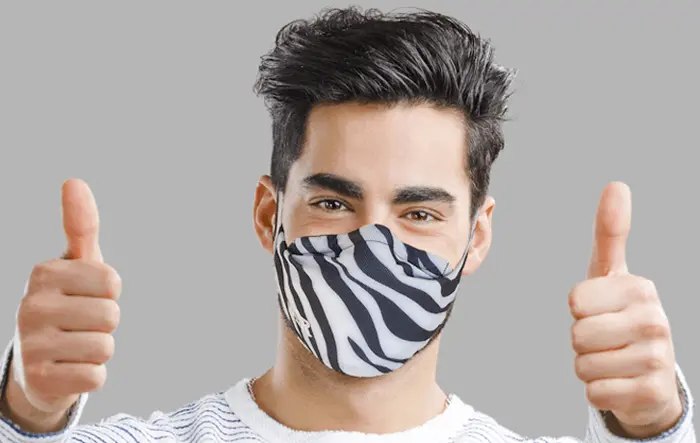
MyAir is made with a specialized sports fabric that won’t fray or unravel. The edges are intentionally unfinished — we designed our masks without seams for comfort on the face and around the ears and to allow unrestricted stretch.
One of the most common complaints we hear about wearing masks comes from those who have to wear glasses. Few things are more annoying than setting your mask in place only to fog up your spectacles. Luckily, we wrote a whole post on how to handle this pesky problem.
What if you overheat? If you overheat easily in a mask, look for inner and outer layers of tightly woven, lightweight, high-tech fabrics that can help keep you cool (like ours). Some mask makers claim their fabrics have anti-microbial properties, but there’s no evidence they can protect you against COVID-19. Make sure any mask you buy covers your mouth and nose, with no gaps on the sides.
Can You Breathe Well?
The first and best way to ensure you can breathe well through your face mask is to choose the lightest fabric and filter that is still effective in blocking airborne viruses and bacteria down to 0.1 microns.
Another way to make wearing your face mask more comfortable is, rather than trying to breathe directly through your mask, investing in a pack of these 3D mask brackets. The mask support frame has a contoured edge designed to sit against your face and chin while keeping the fabric away from your skin. It is made from soft rubber and is lightweight, supportive, odorless, and non-irritating.
But wearing a mask for long periods can still sometimes cause a sensation of uncomfortable breathing or shortness of breath, especially during exercise. This can actually be a condition called dyspnea.
“Pulling air through the mask — which has some resistance to air flow — can require a small increase in the effort it takes to breathe, and you may notice it,” explains Dr. Richard Schwartzstein, a dyspnea specialist and chief of the Pulmonary, Critical Care and Sleep Medicine Division at Harvard-affiliated Beth Israel Deaconess Medical Center.
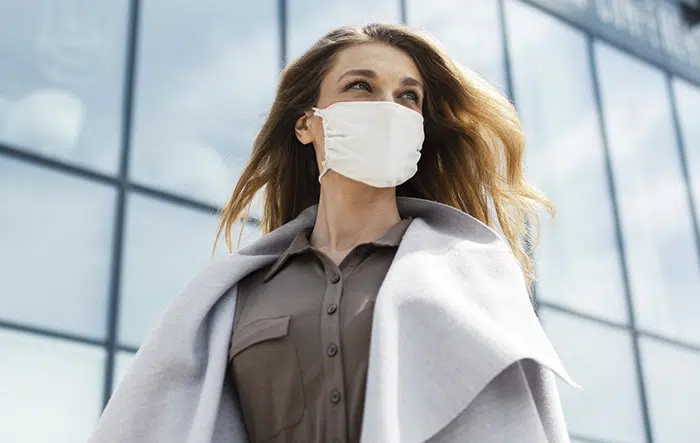
Dr. Bartolome Celli, a pulmonologist with Harvard-affiliated Brigham and -Women’s Hospital, suggests, “The best strategy [to deal with dyspnea] is to breathe at a slower rate to decrease the resistance against the mask. Try exhaling with pursed lips. Or if you’re walking, decrease the pace to lower the demand on your lungs,”
You might find yourself taking shallow breaths or even holding your breath. This can cause you to breathe in more carbon dioxide, which can cause headaches and nausea. Moving around while wearing a mask can also be tiring because you have to breathe harder to do regular tasks.
Having a snug mask on top of your face may make you feel anxious and trigger claustrophobia (a fear of being in confined spaces). “Sometimes, when we are anxious, we breathe more rapidly to get more oxygen into the blood, and our heart beats more rapidly. It’s merely our body’s alarm system performing its evolutionary job,” points out Abby Altman, an associate psychologist at Brigham and Women’s Hospital.
Some comforting news about wearing face masks is that there is no evidence that wearing a fabric face covering changes the oxygen or carbon dioxide levels in your blood, and it doesn’t harm your lungs.
Does Your Skin Get Irritated?
“Facial rashes or breakouts from mask wearing are common,” says Dr. Jason Frangos, a dermatologist at Brigham and Women’s Hospital.
He says these rashes or breakouts have several potential causes. “Masks can trap oils, irritants, and allergens against the skin and block hair follicles and glands, causing pimples. In other cases, some people have a form of dandruff that affects the face called seborrheic dermatitis. This is a red, scaly rash that may be worsened by heat and humidity that builds up beneath the mask.”
What you can do to deal with this is to wash cloth masks regularly with a non-synthetic laundry detergent. Laundry detergents contain numerous ingredients that might be irritants (surfactants and bleaches) to your skin or sensitizers (fragrances and enzymes), which can cause asthma and other allergic diseases.
Checking your detergents ingredient list for irritants, fragrances, preservatives, and dyes is the best way to find a detergent that won’t irritate your skin.
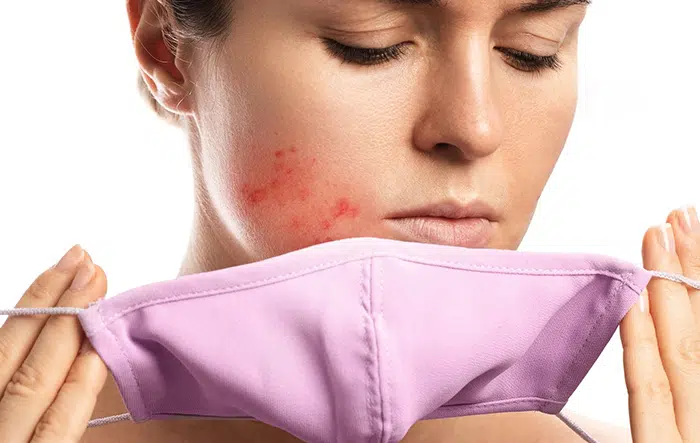
Noodle & Boo’s Ultra-Safe Laundry Detergent is made for babies (but good for you too) with plant-based ingredients. This soap is hypoallergenic and tested by pediatricians and dermatologists, too. The concentrated formula also allows you to use less with every load. This is essential with this product, as it’s pricier than others on shelves and online.
Dreft Newborn Baby Liquid Laundry Detergent is free of dyes and is hypoallergenic. The formula includes biodegradable surfactants and enzymes that remove dirt and stains. Again, it’s made with babies in mind but can be safely used to hand wash your masks.
Tide Purclean Honey-Lavender Liquid Laundry Detergent is free from chlorine, dyes, brightening agents, and phosphates. It’s easy on your skin and is more affordable than the previous two detergents.
Make sure to wash your face twice a day with a gentle cleanser and use a moisturizer that won’t clog your pores (non-comedogenic moisturizer). And consider not wearing foundation or makeup under your mask. Some masks may cause skin irritation like eczema or contact dermatitis, which are both itchy and uncomfortable.
If you notice scaly patches and red skin on the sides of your nose or ears, you may have seborrheic dermatitis. Seborrheic dermatitis is a common skin condition that mainly affects your scalp but can also affect other oily areas of your body.
Wash your face regularly and consider an over-the-counter acne wash that contains salicylic acid to help unclog pores and prevent them. “For irritated skin, a steroid cream and moisturizer can help,” Dr. Frangos says.
The Pretty Factor
While how a mask looks is probably the lowest on the scale of considerations when it comes to choosing a mask, at this point in the pandemic, many of us are tired of sporting the same old boring mask.
We’ve put a lot of thought into the designs of the masks we sell at Ellessco. Choose from one of our fun patterns like zebra, camo, leopard, patriotic stars on blue, and many others. We also have masks in denim blue, buckskin, and other neutral solid colors. And in our ongoing support for breast cancer warriors, we’ve created a vibrant pink face mask.
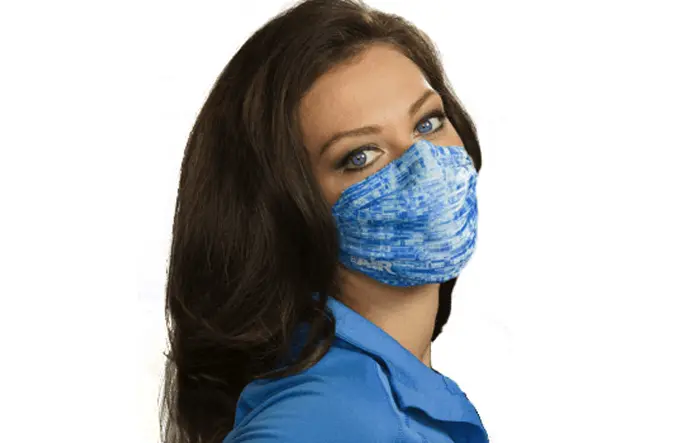
The marketplace has also come up with some clever and practical hacks to make wearing masks more functional.
We’re fans of this mask chain idea. Made of brass casting with a shiny gold plating, this 28″ long chain hooks to the ear loops of your favorite face mask. When you get a chance to take your mask off, rather than stuff it into your pocket or your purse, just allow the mask to hang down from the chain. The chain is hypoallergenic and comes with detachable clear rubber loops that let you use it as a sunglass chain.
If a gold chain doesn’t suit your look, try this 10-pack adjustable lanyard chain. Just attach them to the ear loops of your mask, adjust the length to your liking and keep your mask around your neck whether you’re wearing it or not.
This small hair accessory does double duty with both comfort and fun detailing. If you want to take your ears completely out of the equation, simply attach the ear loops to two buttons located on either end of a small fabric band. This band fits around the back of your head and comes in 74 solid, patterned, and textured options. Depending on the size of your head, choose from a 5″ or 7″ strap.
Another way to bypass using your ears as an anchor point is by wearing one of these headbands with buttons. With a 4.9 star rating and over 30,000 sales, this idea is both brilliant and stylish. Handmade from performance-quality spandex, these wide headbands are ideal for medical professionals and workout enthusiasts. Two buttons let you hook your ear loops onto the headband rather than your ears.
One More Thing
For those days and times when you’re lucky enough to be flying somewhere for a vacation rather than working at your day job, these same tips also apply and can be very useful.
Experts are clear that dehydration worsens all symptoms of jet lag. When you’re in the dry environment of an airplane cabin, you lose a lot of moisture every time you exhale. (This is also true when you’re in a desert area, heated homes and buildings, mountains and high elevation, etc.)
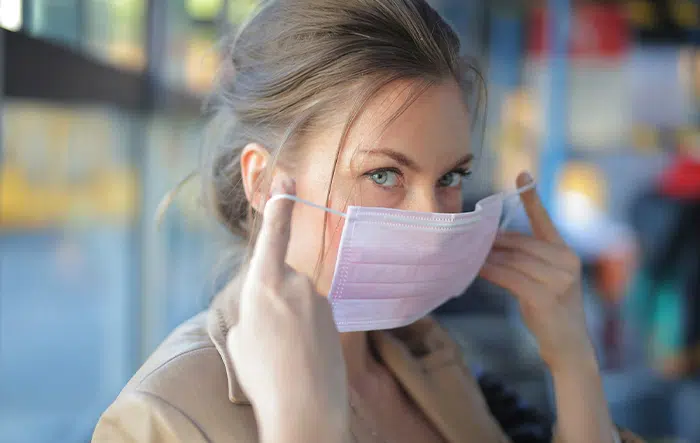
Any dehydration is moisture loss from your body which can cause all kinds of miserable symptoms from diminished blood flow to muscles, reduced kidney function, and fatigue to dry nasal passages and respiratory tracts.
We, at Ellessco, are in the face mask game for the long haul. We’re committed to making masks that fit you well, let you breathe freely, don’t irritate your skin, and let you look good doing so.
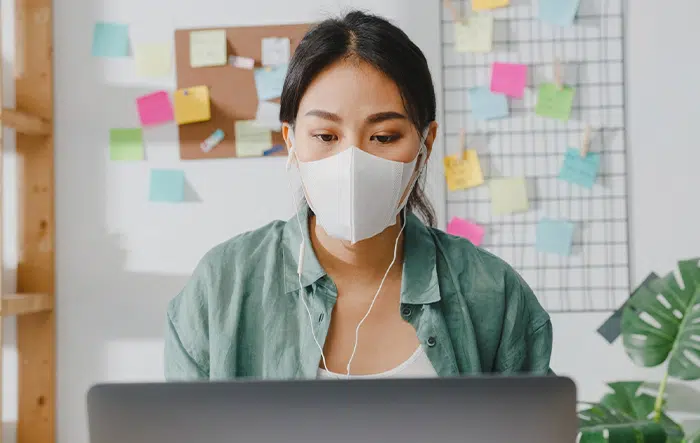
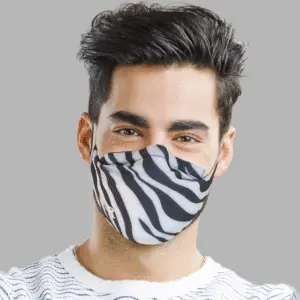

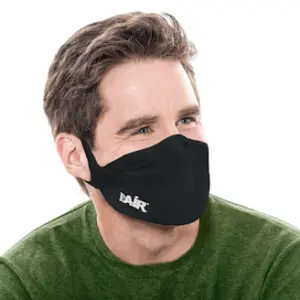
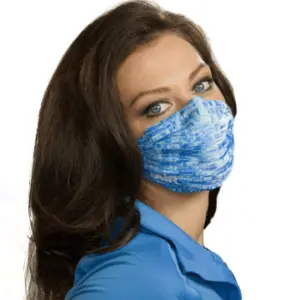
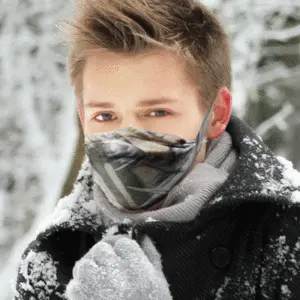
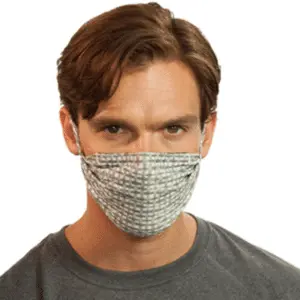
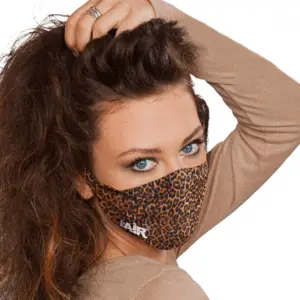
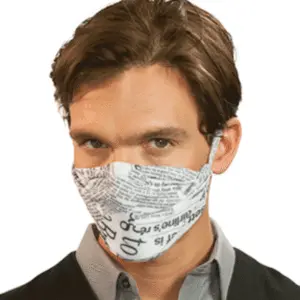

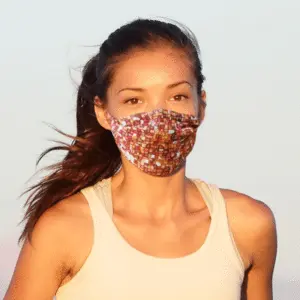

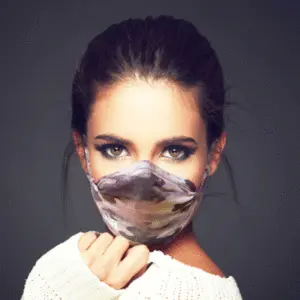
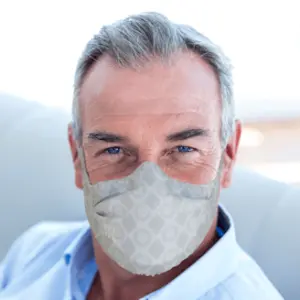



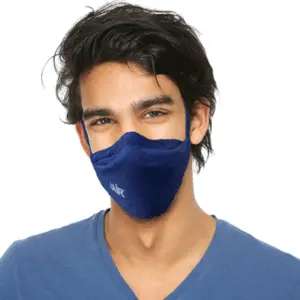

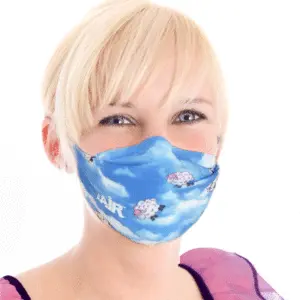
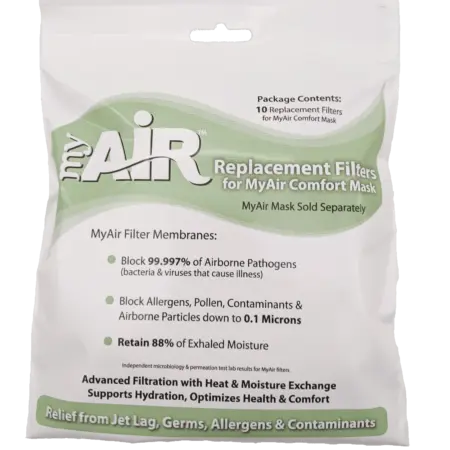
0 Comments